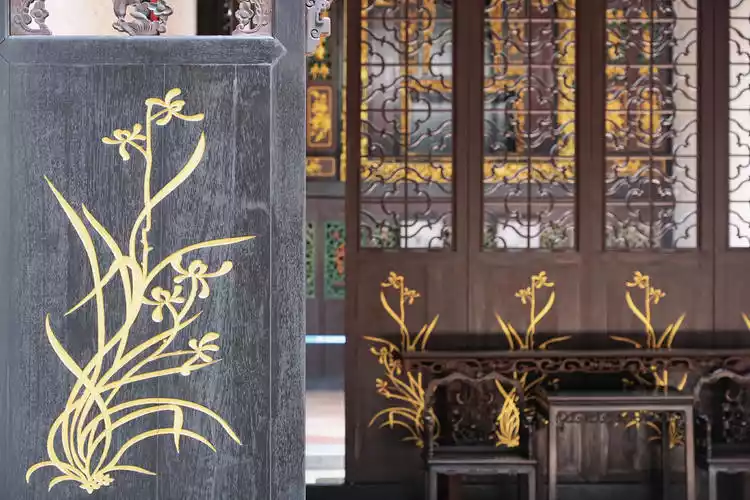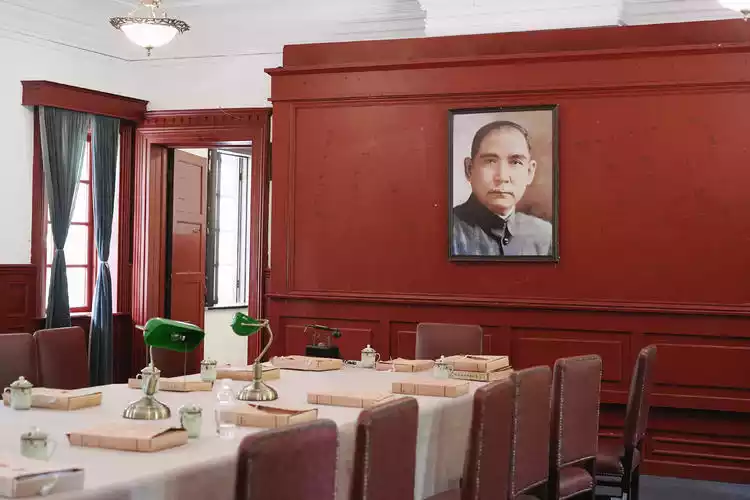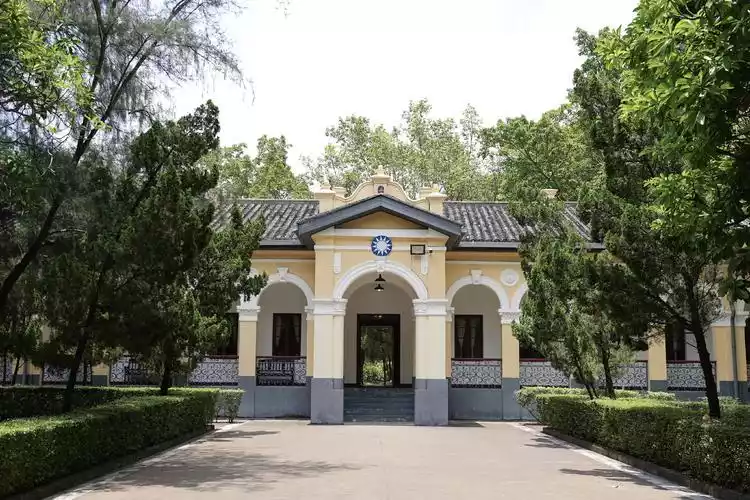Zhongshan Travel Guide | Explore Zhongshan and follow in the footsteps of great men!
Preface
My favorite way to experience a city's heritage is to find a historic neighborhood and walk through time. Walking through Zhongshan's old streets and arcades, I can feel the weight of history. A city's vibrant present and future are rooted in its respect and cherishment of its history. In Zhongshan, I feel every moment cherished.

Zhongshancheck the details
Zhongshan is a nationally recognized historical and cultural city. The Xiangshan culture, originating in Zhongshan, is a crucial source of modern Chinese culture and is known as the hometown of Guangdong's quyi (Cantonese opera) and overseas Chinese. Formerly Xiangshan County, established in 1152, it was renamed Zhongshan County in 1925 in honor of Sun Yat-sen. Located in the south-central Pearl River Delta, at the mouth of the lower reaches of the Xijiang and Beijiang Rivers, Zhongshan borders Guangzhou's Panyu District and Foshan's Shunde District to the north, Jiangmen City, Xinhui District, and Zhuhai's Doumen District to the west, and Zhuhai City to the southeast. Eastward, it faces Shenzhen City and the Hong Kong Special Administrative Region across the Lingdingyang at the mouth of the Pearl River.
5554 recommendations, 5025 visits
Day 1
Small streets and alleys still preserve the most primitive state of life, and most of the shops along the streets retain their appearance soaked in time. Walking in Zhongshan feels like walking through a peaceful yet extremely prosperous old market. This sense of intimacy brings an inexplicable touch of emotion. It is as if we have had some mysterious intersection with this distant time and space.
Zhongshan Old Town Walking Tour Route
The route takes you from Qijiang Park to Zhongshan Art Museum, then Qijiang Bridge to Sunwen West Road, Xiangshan Commercial Culture Museum, and finally Zhongshan Museum. You'll pass Sunwen West Road, Zhongshan's bustling commercial street. Lined with charming arcade buildings, the street is home to a wealth of delicious snacks and stylish cafes, making it the perfect way to savor the city's charm. Alternatively, you can walk in reverse to Qijiang Park to watch the sunset and enjoy the nightscape, fully immersing yourself in the beautiful old city.
Qijiang Park
Qijiang Park, located on the bank of Qijiang River, is a free public park. It is also a theme park converted from the former site of Yuezhong Shipyard in Zhongshan City, Guangdong Province. The park has many art installations that incorporate ecological and urban concepts, making it a very conceptual art gathering place.

Walking on the lawn of the park, many colorful works of art will catch your eye from time to time.

Zhongshan Art Museum
The Zhongshan Art Museum is also located within the park. The pale yellow building in the park's center is the museum. It's a small, two-story Western-style building that showcases a variety of contemporary art.


Qijiang Bridge
The Qijiang Bridge, spanning the Qijiang River, is a landmark in Zhongshan. On both sides of the river are European-style buildings, a Ferris wheel, and the Tianzi Wharf, where Dr. Sun Yat-sen once visited. Crossing the bridge, we reach the other side of the river, where the old town awaits us.


Sun Yat-sen West Road
Sunwen West Road is undoubtedly the most atmospheric old street in Zhongshan. With arcade buildings lining both sides, it feels like a throwback to the Republican era, when vendors flocked to the streets.

This place has now become a uniformly planned pedestrian street. The buildings are mainly 2-3 stories high and are mainly in the "Nanyang arcade" style, which mixes European colonial style buildings with traditional Lingnan arcade buildings, forming a unique architectural feature that combines Chinese and Western styles.

Walking along the street, you'll find shops lining both sides, and Zhongshan is renowned for its abundance of coffee shops. Popular local spots like Qilou Coffee and Four Joys Coffee Company are worth a visit, sit down, and enjoy the city's most relaxed atmosphere. Sip a fragrant cup of coffee, cool off the afternoon heat, and continue exploring the city.


A striking feature of the pedestrian street is the stone archway "Da Miao Xia," which reads "Da Miao Xia." It's said this area was once one of the birthplaces of Zhongshan commerce. Although located in the same neighborhood, the streets and alleys here are noticeably wider, and the buildings more imposing, a testament to the area's historic prosperity and bustle.

These arcades all share a uniform style, mostly in elegant, sober colors. The wood carvings, plaster sculptures, and other architectural features are remarkably well-preserved, and the addition of plants imbues these time-worn buildings with a vibrant energy. The ground floors of all the arcades are now shops selling food, clothing, and souvenirs. The occasional sounds echo through this historic commercial street. There's no need for a guide; walking from one end of the street to the other, you'll find countless buildings and sculptures that will make you stop and snap away.


Xiangshan Commercial Culture Museum
Walking along Sunwen West Road, my eyes were drawn to a pink building with a girlish charm. This building is the Xiangshan Commercial Culture Museum, my country's first museum dedicated to commercial culture. It was impossible not to take a photo with this pink wall.

This was once the site of the Shiqi Town Chamber of Commerce. The main facade of the museum was also rebuilt according to the original appearance of the original site, fully demonstrating the architectural style that combines Chinese and Western styles.


The entire museum has three floors, which focus on displaying the development of Zhongshan's commerce and trade during the late Qing Dynasty and the Republic of China period, Zhongshan's unique business culture, the business ideas of Sun Yat-sen and Zheng Guanying, the early Xiangshan compradors, and the founding process of the four major department stores. The stories of Zhongshan merchants' difficulties in starting their own businesses and their ups and downs in the business world are reproduced before our eyes through each cultural relic in the museum.



Zhongshan Museum
The best way to understand a city is to visit its museum. While the museum may be small, it offers a chance to get closer to Zhongshan, understand it, and appreciate it. It's the perfect starting point or end point for a tour of the old city.

The overall building of Zhongshan Museum is quite new, and the infrastructure is quite complete: barrier-free facilities and drinking water stations are already in place, plus there is ample air conditioning, making it quite an enjoyable experience to visit the exhibition here in this midsummer.

The museum's basic exhibition, "Zhongshan History Exhibition," covers almost all the historical changes this land has experienced: four or five thousand years ago, this was an archipelago surrounded by the ocean, and marine culture dominated; after the county was established in the Southern Song Dynasty, Confucianism slowly and subtly permeated this place, and by the Qing Dynasty, Xiangshan Island was gradually connected to the mainland, and a fertile land with prosperous resources, a prosperous people, and a flourishing literary style was born.


The museum's collection of cultural relics ranges from stone vessels from the Stone Age, bronzes from the Shang and Zhou dynasties, and exquisite ceramics from the Tang, Song, Yuan, Ming and Qing dynasties to the present day. They all tell of the important historical position of Xiangshan, a key node on the Maritime Silk Road.

"Winds Rises from the Lingdingyang" and "Dare to Be the First in the World"—these modules within the core exhibition reveal the origins of this city and most accurately encapsulate the spiritual core of the Xiangshan people. The names of the two temporary exhibition halls, "Shiqihai" and "Lingdingyang," also closely echo this land.



In the same park, there is another museum, the Zhongshan Overseas Chinese History Museum. Zhongshan is a famous hometown of overseas Chinese, and this museum is a concentrated display of the history of Zhongshan's overseas Chinese.


Day 2
The city's name comes from a resounding figure in Chinese history: Sun Yat-sen. Upon arriving in Zhongshan, I most wanted to see everything related to this great man. This essence can be considered the essence of Zhongshan's culture. Only by getting close to and understanding this great man can we better appreciate this city.
Sun Yat-sen Memorial Hall
The Sun Yat-sen Memorial Hall is located opposite the Zhongshan Museum. The wide square in front of the building makes it look more solemn and dignified.

Some of Mr. Sun Yat-sen's important statements and inscriptions are recorded here with pictures. The admirable life of this great man is slowly unfolding in these historical events and old photos.

As you enter the main hall, you'll see a statue of Dr. Sun Yat-sen standing in the center. The main exhibition area is themed photo exhibitions, spread across three halls, showcasing his life story and remarkable achievements. It's a great place to take a look.

The most impressive story is the lifelong struggle he and his wife, Soong Ching Ling, shared. The memorial hall also features a special exhibition dedicated to this couple. Holding hands and loving each other sincerely is the most beautiful expression of love.



Zhongshan Hometown Tourist Area
Today, the "Sun Yat-sen Hometown Tourist Area" has been developed into a large theme park, comprising the Sun Yat-sen Memorial Hall, the Cuiheng Village Ancient Buildings, the Xinhai Revolution Memorial Park, and the Zhongshan Film and Television City. Located in Nanlang, near the city center, I rented a car for greater mobility. Despite being far from the city, it's only a 20-minute drive away, making it easily accessible by taxi or public transportation.
We set off early in the morning and first visited the Sun Yat-sen Memorial Hall and the Cuiheng Village Ancient Buildings. While there was a public parking lot, it quickly became overcrowded with tourists. We found a private parking lot nearby and followed the throng into the scenic area.

This scenic spot requires no entrance fee; only a real-name reservation and security check are required. Upon entering, a vibrant red building stands to the right: Sun Yat-sen's former residence. This isn't his ancestral home, but rather a three-bay, two-story brick and wood structure designed and built by Sun Yat-sen in 1892, after his eldest brother, Sun Mei, remitted money from Honolulu. Photography is prohibited inside the residence, and even from its exterior, it stands out from other buildings in the village. This building exemplifies a fusion of Eastern and Western styles, with many rooms and objects preserved in excellent condition.

Cuiheng Village, where the house is located, has undergone a comprehensive renovation, nearly recreating the residential features of the late Qing Dynasty and early Republican era, providing a three-dimensional depiction of the lives of families from all walks of life in Cuiheng Village. The original dwellings, general stores, and barber shops have been preserved. The small village is a maze of houses and crisscrossing paths, making it easy to get lost.


The ancestral hall still stands, and the classroom where Dr. Sun Yat-sen studied has been preserved in its original state. Through these residential buildings, we can fully experience the folk customs of the Pearl River Delta at that time, and also get a glimpse of the great man's upbringing and living environment.

This small Lingnan village has always produced many talented people. In Cuiheng Village, there are still the Yang Yin Martyr Memorial Exhibition, the Yang Heling Memorial Exhibition, the Lu Haodong Martyr Life Memorial Exhibition, etc., all of which were converted from old houses.



The Sun Yat-sen Memorial Hall is located in the center of the scenic area. The first floor of the hall displays Sun Yat-sen's life and historical relics, while the second floor displays Sun Yat-sen's relatives and descendants. Here, you can have a more comprehensive understanding of the great man and his family.

Turn right at the exit and you will find the Xinhai Revolution Memorial Park. This is a fully open park with large lawns and pavilions for rest, as well as many stone tablets with inscriptions. It is a quiet place to rest after the tour.

Zhongshan Film and Television City
Another independent scenic spot within Zhongshan's hometown is Zhongshan Film and Television City. This attraction, which requires a separate ticket, is a CCTV filming location and has been the setting for many famous films. Upon entering, a separate film and television exhibition hall showcases scenes from the films and TV series that have been shot at this studio.

The central area comprises several buildings forming a central plaza, with replicas of key buildings associated with Dr. Sun Yat-sen, including the Sun Yat-sen Mausoleum, the Presidential Palace, and Dr. Sun's former residence in Shanghai. These buildings, significant to Dr. Sun's life, were relocated from Nanjing, Guangzhou, and Shanghai to his hometown in their original form. This geographical connection allows the film and television city to better reflect the city's greatest treasure: a great figure of the Chinese nation.


The living room, conference room, and office are all recreated in the original Republican era style. You can walk up the stairs to visit the rooms on the second floor. The restoration of this residence pays close attention to detail, with paintings, calligraphy, and furniture all fully displayed.




In a separate house, the "Exhibition of Historical Celebrities in Zhongshan" is displayed. In addition to the great man Sun Yat-sen, many great figures in the fields of thought, business, education and even entertainment were born on this fertile land of Zhongshan.

The map shows the entire film and television city divided into China Town, Britain Town, America Town, and Japan Town. Japan Town, now renamed Chang'an Town, is a separate, large-scale script-killing area offering an immersive real-life experience. While this area is no longer open to the public, it's a great place for fans looking to experience script-killing games.

Chinatown, Britishtown and Americantown are connected to each other, restoring the scenes of the old Zhongshan City, British and American streets and Chinatowns abroad.








